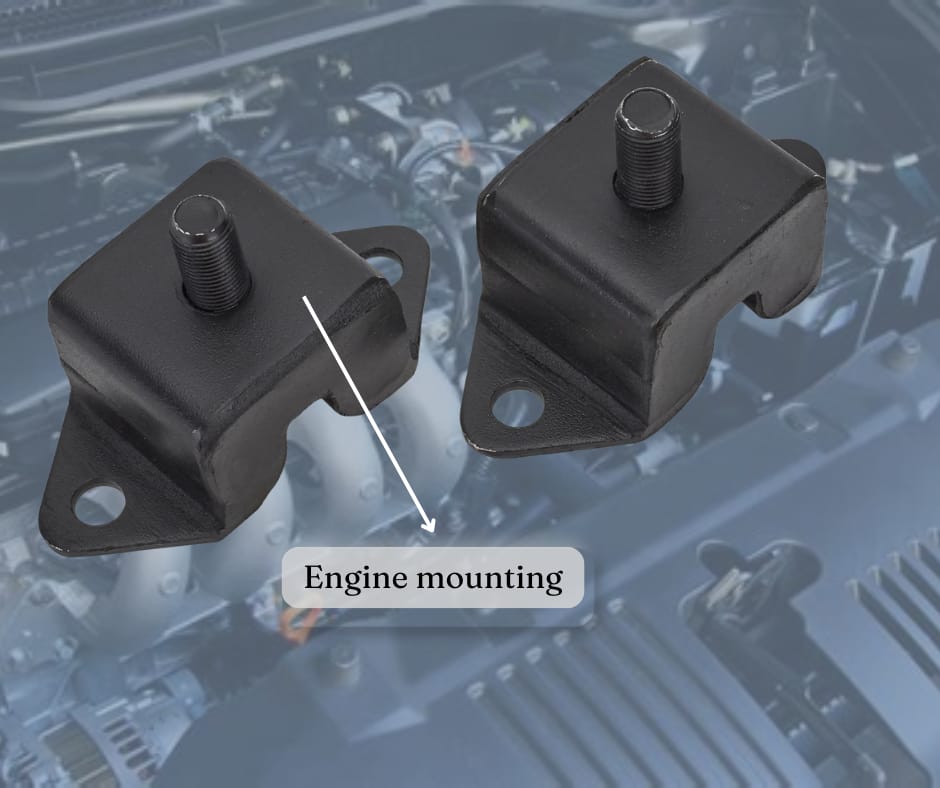Signs Your Engine Mountings Need Replacement

Discover the key indicators that your car's engine mountings may be failing and why timely replacement is crucial for vehicle safety and performance.
Understanding Engine Mounts: Purpose and Function
Engine mounts, also known as motor mounts, serve a critical role in your vehicle's operation. They are designed to secure the engine to the vehicle's chassis, minimizing vibration and noise while driving. Made of metal and rubber, engine mounts absorb and isolate the engine's movements from the rest of the vehicle, ensuring a smoother ride and preventing structural damage. Over time, these mounts can deteriorate due to stress, heat, and chemical exposure, leading to potential issues with vehicle performance and comfort.
It's essential to recognize the function of engine mounts to understand the impact of their wear and tear. By supporting the engine's weight and dampening vibration, they contribute significantly to the driving experience. When they fail, they can no longer perform their job effectively, which can lead to a range of problems that are noticeable to the driver and detrimental to the vehicle.
Vibrations and Noise: Early Warning Signs of Mount Wear
One of the earliest signs that your engine mounts may need replacement is an increase in vibrations and noise coming from the engine area, especially noticeable at idle or when accelerating. Worn mounts can't absorb the engine's movements effectively, resulting in vibrations that can be felt through the steering wheel or the floor of the vehicle. Additionally, you may hear unusual noises such as clunking, rattling, or banging when starting the engine or changing gears, indicating that the engine is moving excessively within the engine bay.
Noise and vibrations are more than just a nuisance; they are an alert to a potential issue that, if left unaddressed, can result in further damage. For instance, excessive engine movement can lead to misalignment of the driveline, premature wear of other components, and even damage to the engine itself.
Visual Checks: Identifying Physical Damage to Engine Mounts
Regular visual inspections can help identify physical damage to engine mounts before they lead to more severe issues. Look for signs of cracking, splitting, or crumbling rubber, as well as any breaks or bends in the metal parts. Engine mounts can also be subject to hydraulic fluid leaks if they have a fluid-filled damper. Any fluid on the mount or surrounding area can indicate a leak and the need for replacement.
During a visual check, it's also important to note the position of the engine. If the engine appears to be sagging or not level, this could be a clear indication that the mounts are no longer able to support its weight properly. Regular checks allow for early detection and maintenance, preventing unexpected breakdowns and costly repairs.
Impact on Vehicle Handling and Performance
Worn engine mounts can have a substantial impact on your vehicle's handling and overall performance. You may notice that your car feels less stable, particularly during acceleration or when driving at higher speeds. This instability can also affect the precision of steering, resulting in a less responsive or 'floaty' feel while navigating turns. In extreme cases, poor engine mounting can lead to shifting of the engine, which can impede the operation of the throttle, clutch, and brakes, leading to a potentially unsafe driving situation.
Additionally, engine misalignment caused by failed mounts can strain other vehicle components, leading to increased wear and reduced efficiency. This misalignment can decrease fuel economy and increase emissions, as the engine may have to work harder to perform effectively. Keeping engine mounts in good condition is therefore crucial for maintaining optimal vehicle performance and safety.
When to Consult a Professional: Maintenance Tips for Engine Mounts
If you experience any of the signs of worn engine mounts, it's important to consult a professional mechanic for a thorough inspection and diagnosis. While some car enthusiasts may be capable of checking and replacing engine mounts themselves, the process can be challenging and often requires specialized tools and knowledge.
Regular maintenance can prolong the life of your engine mounts. This includes avoiding harsh driving conditions, reducing unnecessary idling, and ensuring your engine is properly tuned. Nonetheless, engine mounts are wear items and will eventually need replacement. A professional mechanic can advise on the best course of action and ensure that the replacement mounts are of the correct type and properly installed, which is critical for the continued safety and performance of your vehicle.

 Loading..
Loading..